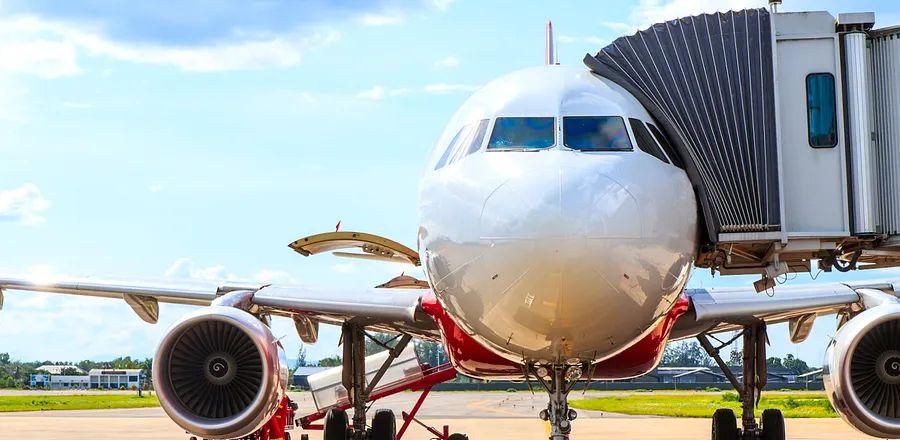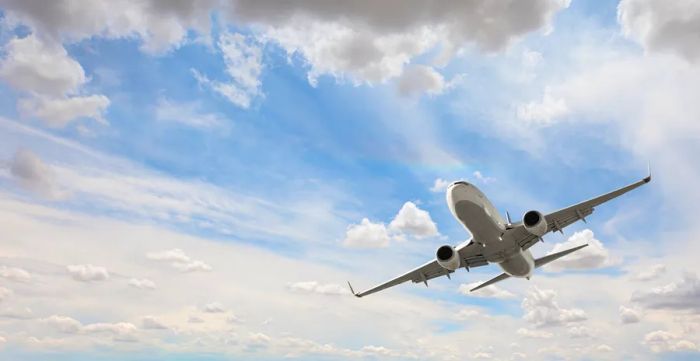How to Identify the Aircraft You'll Be Flying

Knowing the type of airplane you'll be on when making your flight reservation can be quite beneficial. You might be curious about the seating arrangement, or you may want to check if you’re set to fly on a Boeing 737 Max, especially considering the recent grounding of the 737-9 Max after a troubling incident with Alaska Airlines involving a door malfunction earlier this month.
Why else is it useful to know? Many smaller turboprop and regional jet aircraft (as well as some narrow-body and midsize planes) may require you to gate-check your TSA-approved carry-on bags due to limited storage in the cabin. If there’s an alternative aircraft option, you might prefer a larger commercial jet with more spacious overhead bins. The same applies to seating arrangements: A larger plane might offer better seating options, whether you’re looking to upgrade, enjoy more legroom, or ensure your family can sit together.
No matter your reason for wanting to know, here’s how you can determine the type of plane you’ll be flying in.
How to Find Out What Type of Aircraft You'll Be Flying
Almost every airline globally provides details about the aircraft used for flights during the booking process—typically, you'll see the airplane information listed just beneath the flight details when you choose your flights. Start by searching for your departure and arrival airports along with your desired travel dates to discover the aircraft types flying each route.
Similarly, when you look for a flight on a travel search engine like Google Flights, the specific airplane model will appear below each flight segment in smaller text, next to the airline operating the flight.
Five years ago, travel booking platform and app Kayak introduced an aircraft filter, and usage of this feature reportedly increased following the Alaska Airlines incident in January 2024. This allows users to filter out specific aircraft models, such as the Boeing 737-8 Max and Boeing 737-9 Max, for those who are wary of flying on those variants.
Discover your aircraft model using ITA Matrix
If the aircraft type remains uncertain, enter your departure, destination, and travel date into ITA Matrix, a flight search engine. After locating your flight, click the details arrow on the far right to see precisely which type of plane you’re booked on.
Airlines may occasionally alter their schedules, particularly for flights booked several months in advance, which can affect both the departure time and the type of aircraft assigned. Day-of aircraft changes (or equipment changes, as they’re known in the industry) are uncommon unless mechanical issues or weather-related delays necessitate a different plane. However, such changes can—and do—occur.

Photo by Romeo Pj/Shutterstock
How to Determine the Best Seats Based on Aircraft Type
One of the major advantages of knowing your aircraft type beforehand is that it allows you to select the best available seat, including the safest seat on the aircraft. While aircraft manufacturers generally maintain consistent designs for each specific model, airlines have numerous ways to customize these models upon ordering. This can encompass aspects like engine types, the layout of galleys and lavatories, and the arrangement and quantity of seats. For instance, a budget airline might prioritize maximizing seat capacity, whereas an international carrier might emphasize more premium seating options. Some airlines even operate different versions of the same aircraft: for example, Delta has multiple models of Boeing 767-300ER planes, each with distinct cabin configurations.
Start by checking the seat map on your reservation page to identify the version of the aircraft you're on before visiting a seat map site. Once you determine the exact aircraft type, look it up on websites like SeatGuru or SeatMaestro. These sites provide detailed information on an airline’s fleet, and for certain aircraft, there may be multiple configurations. This can help you avoid seats near the bathroom or those with misaligned windows (like seats without a window next to them or an off-center window that obstructs your view).
These websites are also excellent at detailing the types of seats available (like lie-flat versus recliner seats in business class) and their associated amenities. Does the aircraft feature built-in entertainment screens? Will there be wireless internet access? You can also find out which seats might have limited recline or lack under-seat storage.
Common Aircraft Types for U.S. Flights
The most frequently used aircraft for U.S. travelers are produced by four primary manufacturers: Airbus, Boeing, Bombardier, and Embraer.
In contrast to military aircraft, which prioritize high speed and extreme maneuverability, passenger jets are designed with a focus on comfort for longer journeys, operating at slower speeds that are gentler on the body.
Fleet compositions differ significantly from one airline to another. Alaska Airlines exclusively operated Boeing aircraft until its merger with Virgin America in 2016, which featured an entirely Airbus fleet. Alaska's regional partner, Horizon Air, primarily uses Bombardier planes. Delta maintained an all-Boeing fleet until merging with Northwest in 2008, after which it began making substantial orders with Airbus.

Photo by muratart/Shutterstock
What are the differences between these types of planes?
If you prefer to board a plane and zone out for hours, it's best to steer clear of older aircraft, which can be quite noisy. For example, the single-aisle McDonnell Douglas MD-80 series operated by Delta will envelop you in engine noise if you sit at the rear, so be sure to bring headphones.
If you enjoy spotting landmarks from above, remember that most Airbus planes feature smaller windows compared to Boeing models, although the Airbus A350 does have larger portholes. This design makes it easier to see the scenery, even from an aisle seat.
New aircraft models like the Boeing 787 Dreamliner and Airbus A350 are constructed using lighter composite materials, enabling them to consume less fuel. Additionally, these planes are kinder to your skin: primarily used for international flights, they come equipped with enhanced air ventilation and circulation systems that maintain cabin pressure at levels closer to those found on the ground. This can help reduce dehydration and, ideally, lessen the effects of jet lag.
For a roomier cabin experience, wide-body aircraft featuring two aisles are obviously larger. They often include updated entertainment systems and are typically employed for long-haul international flights.
Are some aircraft superior to others?
It all depends on your priorities—if you’re seeking more legroom or extra luggage space, a wide-body plane like the Boeing 787 Dreamliner would be an excellent choice. Conversely, if having an entertainment system is essential to your comfort on long-haul flights, a newer aircraft like the Airbus A220 could be ideal.
One more thing to consider: If you're heading to a remote destination, your journey will likely begin on a large, long-haul aircraft and conclude on a smaller transport plane or even a single-engine aircraft, depending on where you're going. Be ready to gate-check your larger carry-on luggage just in case.
How can I recognize a plane at a glance?
If you aspire to identify the make and model of an airplane with just a quick look, here are some initial tips. The most recognizable aircraft is the enormous Airbus A380, which features two full levels of windows extending from the nose to the tail. The Boeing 747 has a second level too, but it only runs from the cockpit to above the wings, giving it a distinct bubble shape at the front.
The Boeing 787 Dreamliner and Airbus A350, both similar in size, have subtle differences to help you tell them apart. The A350’s wing tips curl upward, while the Dreamliner’s wings slightly angle up and are raked back at the tips.
The Boeing 777 features a pinched, flat tail end at the back, while the Boeing 767 and Airbus A330 have conical shapes underneath the tail. All Airbus A330 and A340 models come equipped with winglets, whereas 777s do not. Some Boeing 767 aircraft have had winglets added for improved fuel efficiency as well.
If you're serious about honing your plane spotting skills, consider booking a room at one of these airport hotels for a view that rivals that of a control tower.
This article was first published in April 2019 and was updated on January 17, 2024, to include the latest information.

1

2

3

4

5
Evaluation :
5/5